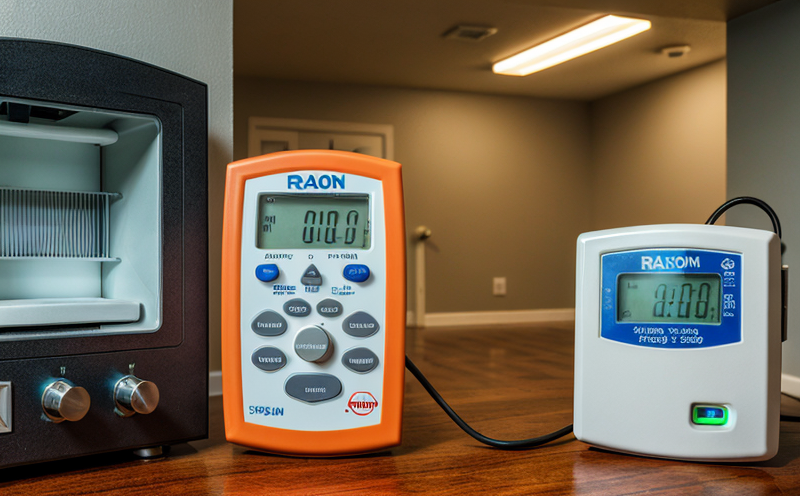Radon Measurement & Indoor Radiation Testing
Radon measurement and indoor radiation testing are critical components of ensuring a safe living or working environment. Radon is a colorless, odorless noble gas that can seep into buildings from the soil beneath them. While radon exposure does not pose an immediate threat, long-term inhalation increases the risk of lung cancer, especially in smokers.
The World Health Organization (WHO) recommends keeping indoor radon levels below 148 Becquerels per cubic meter (Bq/m³). The United States Environmental Protection Agency (EPA) also advises maintaining radon concentrations at or below this level. Radon testing is essential for compliance with these guidelines and to protect public health.
Our laboratory offers comprehensive services for measuring indoor radiation, focusing primarily on radon but extending to other areas of concern such as thoron and alpha particles. We use advanced detection methods including passive detectors like charcoal canisters and electrostatic collectors alongside active monitoring systems that continuously measure radon levels.
Testing procedures involve collecting air samples from various locations within a building over specified durations, which are then analyzed in our ISO/IEC 17025-accredited laboratory. This approach ensures accurate measurements reflective of the average radon concentration in occupied spaces.
We also provide comprehensive reports detailing test results along with recommendations for mitigation strategies if high levels are detected. Our services cater to residential homeowners, commercial property owners, and government agencies responsible for public safety.
- Passive detectors
- Active monitoring systems
- Charcoal canister sampling
- Electrostatic collector sampling
The importance of radon measurement cannot be overstated. It plays a crucial role in safeguarding health and meeting regulatory requirements. By offering precise and reliable testing, we contribute significantly to enhancing indoor air quality and promoting overall well-being.
Why It Matters
Radon is the second leading cause of lung cancer after smoking cigarettes. According to the EPA, approximately 21,000 people die each year from radon-induced lung cancers in the United States alone. Exposure typically occurs through breathing air containing radon or its decay products.
In homes built on certain types of soil, there is a higher risk of elevated indoor radon levels due to natural seepage. Buildings constructed with inadequate ventilation further exacerbate this problem by trapping radon inside enclosed areas.
Occupational exposure can also occur in workplaces like mines and underground structures where concentrations may be much higher than those found in homes. In such environments, regular monitoring is vital for preventing adverse health effects.
Compliance with national standards such as the WHO guideline of 148 Bq/m³ is essential not only to avoid legal penalties but also to demonstrate a commitment to employee and public safety. Many countries have established regulations requiring periodic testing in certain sectors, making radon measurement an integral part of quality assurance programs.
Industry Applications
The application of radon measurement extends beyond residential settings into various industries. In healthcare facilities, ensuring low levels of radon helps protect patients and staff from unnecessary radiation exposure. Schools are another key area where testing is important given children’s increased vulnerability to carcinogens.
In the construction sector, builders can use our services during the planning stages to identify potential radon risks associated with specific site conditions. This information allows them to incorporate effective mitigation measures into their designs early on.
For real estate transactions, especially involving older properties, radon testing provides valuable data that buyers and sellers need when negotiating terms. It also aids appraisers in assessing property value accurately based on health safety factors.
Quality and Reliability Assurance
- Data Accuracy: Our laboratory adheres strictly to internationally recognized standards such as ISO/IEC 17025 for all testing procedures. This ensures that every measurement obtained reflects true radon concentrations without bias.
- Standard Operating Procedures (SOPs): Each step of the test process follows documented SOPs designed specifically for detecting and quantifying radon gas accurately.
- Duplicate Testing: For critical environments, we conduct duplicate tests to confirm initial findings before finalizing reports. This practice minimizes errors due to sampling variability or instrument malfunction.
- Calibration Protocols: All monitoring instruments undergo regular calibration checks against certified reference materials every six months ensuring their accuracy remains within acceptable limits throughout their operational life.
Beyond these technical aspects, our team comprises highly trained professionals with extensive experience in radiation safety. They provide detailed explanations of test results and offer expert advice on appropriate remediation actions needed when elevated levels are detected.





